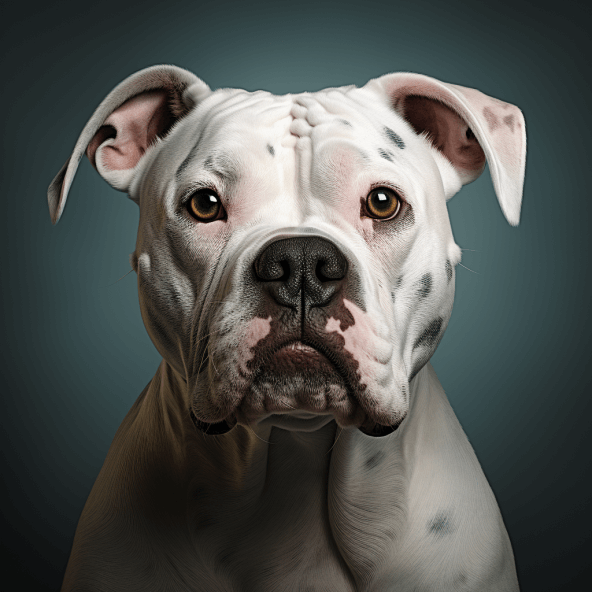What Do Dogs Dream About?
Ever wondered as you watch your furry friend twitch and whimper in their sleep – “What Do Dogs Dream About?” Well, your curiosity can finally be put to rest. Prepare to embark on a fascinating journey into the world of canine dreams. This article will satiate your thirst for knowledge as it peels back the layers of mystery, giving you a scientific perspective on your dog’s nocturnal brain activities. You might never see your dog’s sleepy antics in the same light again. Isn’t it time you got to know your four-legged pal a little better?
Understanding Canine Sleep Patterns
As a dog owner, you probably see your dog sleeping a whole lot and might have noticed that they seem to have quite active sleep. Much like humans, dogs go through various stages of sleep, including Rapid Eye Movement (REM) sleep and Non-REM sleep. But what happens during each of these stages, and what does this mean for your dog’s dreaming? Let’s find out.
Stages of dog sleep
When your dog first closes its eyes to drift off, it enters what is called the light stage of sleep where they’re very responsive to their surroundings. It’s during the next stage, the deep sleep stage, that your dog becomes less reactive to the world around them. Their heartbeat slows, their muscles relax, and they’re less likely to wake if you call their name. Finally, we have the REM stage where your dog starts to dream.
REM Sleep in Dogs
During REM sleep, your dog may start making odd noises or twitching their paws. That’s a good indication that they’re dreaming. REM sleep is named after the rapid eye movements that occur during this phase. Although dogs sleep a lot, only about 20-25% of their sleep is REM sleep, compared to about 25% in humans.
Non-REM Sleep in Dogs
Non-REM sleep is typically more restful and restorative than REM sleep. It’s during this stage that your dog’s body repairs tissues, builds bone and muscle, and strengthens the immune system. Although dogs dream less during non-REM sleep, it’s critical for their overall health and well-being.
Evidence That Dogs Dream
You may have noticed your dog twitching or whimpering in its sleep and wondered if it was dreaming. Well, the evidence suggests that they do. Not only can you observe certain behaviours during your dog’s sleep, but scientific studies also provide evidence of dogs dreaming.
Observing dog sleep behavior
Observing your dog in their sleep can provide insight into whether they’re dreaming. Dogs in the REM stage of sleep might twitch, quiver, make leg movements, or even bark or whimper. This could be a clear sign that they’re dreaming.
Scientific studies on dog dreams
Scientific studies have shown that dogs have similar sleep patterns and brain activity to humans when in the REM stage of sleep. This, along with observable behaviour, strongly suggests that dogs do dream.
Physical signs of dog dreaming
Physical signs of a dreaming dog can vary. Some dogs might twitch their paws as if running, while others might make soft noises. Some dogs even appear to suckle in their sleep, which could be a sign they’re dreaming of nursing.
Comparing Dog Dreams to Human Dreams
Dog dreams and human dreams have a lot in common, especially during the REM stage. There are also some differences, particularly in the content of our dreams.
Similarities in REM sleep
Dogs, like humans, have a REM stage of sleep where dreaming mainly occurs. During this stage, both humans and dogs show similar brain activity, indicating we share similar dreaming patterns.
Differences in dream content
While we can’t ask our dogs to tell us what they dreamed about, evidence suggests that dogs likely dream about dog-like activities, which might be quite different from the content of human dreams.
Understanding memory and dreaming
Dogs, like humans, use dreams to process their experiences and memories. Seeing your dog twitch or whine in their sleep might be an indication that they’re reliving their day in their dreams.
What Dogs Likely Dream About
While we can’t peek into our dog’s dreams (as much as we might like to), we can make some guesses based on their behaviours and the nature of dreams in general.
Interpreting dog dream signs
A dog that’s running in their sleep might be dreaming about chasing a ball, whereas a dog that’s whimpering could be dreaming about a moment when they were scared or anxious.
Common themes in dog dreams
Given that dogs dream about their daily experiences, common themes in their dreams could include playing, chasing, exploring, or even eating.
Dog dreams related to daily activities
Just like us, dogs seem to dream about what happened during their day. If you’ve had an exciting day at the park with your dog, they might replay those moments in their dreams.
Do Different Breeds Dream Differently?
Just as humans have individual and sometimes quite different dreaming experiences, the same is true for different breeds of dogs.
Effect of breed on dream frequency
There’s evidence to suggest that smaller breeds of dog might dream more frequently than larger breeds. This might be because they experience a quicker sleep cycle.
Impact of breed size on dream content
While it’s hard to be sure, size might also influence the content of a dog’s dreams. For example, a Collie might dream of herding sheep, whereas a Terrier might dream of chasing mice.
Breed-specific dream behaviors
While all dogs show physical signs of dreaming, different breeds might show different behaviours due to their distinct temperaments and physical characteristics.
Theories About Dog Dreams
There’s a multitude of theories about why dogs dream. Some theories provide psychological explanations, while others focus on the biological functions that dreams might serve.
Sigmund Freud’s theory on animal dreams
Sigmund Freud, a famous psychologist, believed that dreams were a manifestation of our subconscious desires. If applied to dogs, this means that they could be dreaming about their instincts or desires.
Cognitive processing theory
This theory sees dreaming as a way of processing and making sense of the information dogs collect during the day. This might explain why dogs seem to dream about their daily activities.
Biological function of dreams in dogs
From a biological standpoint, dreams might play a role in memory consolidation, learning, or brain development. This is as true for dogs as it is for humans.
Does Age Affect Dog Dreams?
Age can indeed affect a dog’s dreams just as it can in humans.
Dog dream frequency in puppies
Puppies dream more frequently than adult dogs do. This might be because they’re processing a huge amount of new information every day.
Dreaming in older dogs
Much like elderly humans, older dogs could dream about their past experiences. Their dreams could also be influenced by age-related health problems like cognitive dysfunction syndrome.
How dog’s aging process influences dream patterns
A dog’s dream patterns can change as they age. Older dogs might dream more slowly or have more fragmented sleep due to health issues or cognitive decline.
Nightmares in Dogs
While not all dreams are pleasant, and dogs, like humans, can have bad dreams or nightmares.
Can dogs have nightmares?
There’s evidence to suggest that dogs can have nightmares. They might whimper, cry, twitch, or even growl in their sleep. If they wake up appearing scared or anxious, it’s likely they’ve had a nightmare.
Signs of dog nightmares
Signs of a dog having a nightmare might include sudden movements, surprised or fearful waking, whimpering or growling, or appearing unsettled after waking.
Dealing with a dog having a nightmare
If your dog seems to be having a nightmare, it’s best not to wake them up suddenly. Instead, try to wake them gently with your voice or by turning on a light.
Implications of Dog Dreams for Dog Health
Dreams are not just interesting phenomena; they might have implications for your dog’s health and wellbeing.
Effects of dreaming on dog’s sleep quality
Dreaming can influence the quality of a dog’s sleep. Prolonged REM sleep, where most dreaming occurs, can lead to a more restful sleep.
Dog sleep disorders related to dreaming
Just like humans, dogs can have sleep disorders. These might be related to dreaming, such as REM sleep disorder, where the signals that keep a dog immobile during sleep don’t work properly.
The relationship between a dog’s diet and dreams
There’s some evidence to suggest that a dog’s diet can influence their sleep patterns and dreaming. A diet deficient in necessary nutrients might lead to poor sleep quality and disturbed dreams.
Conclusions on What Dogs Dream About
Understanding your dog’s dreams gives a fascinating insight into their minds. While we might not know exactly what our canine companions dream about, observing their sleep behaviour and noting any changes can help us take better care of them.
Understanding dog dreams better
Understanding dog dreams better can help us better understand their behaviour and mental state. It can also clue us in to any potential health problems.
Future research on dog dreams
More research is needed to fully understand dog dreams. Advances in brain imaging techniques might allow us to peek into the mysterious realm of canine dreams in the future.
The importance of dreams to dogs’ mental health
Just as with humans, a good night’s sleep – complete with dreams – is crucial for a dog’s mental health. Ensuring your dog has a comfortable, quiet place to sleep can contribute to their overall well-being.
So next time you see your dog twitching in their sleep, remember they’re likely off exploring their dream world. And who knows? Maybe they’re dreaming about their favourite activities with you!







